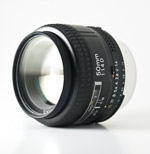
An Extra Pair of Eyes
Having the right lens completes the security course
- By Ralph C. Jensen
- Apr 01, 2010
There is a camera for every need and situation,
and there are lenses to complement them all
for various applications.
The biggest challenge in outdoor live surveillance
for border patrol, Coast Guard and traffic control applications
is atmospheric interference from fog, snow
or haze. Existing fog cancellation devices are expensive
and often require multiple cameras with individual
adjustment to each camera.
Another challenge in an outdoor surveillance lens
is the fact that existing optical fog reduction technology
employs interference reduction spectrum and
therefore cannot reproduce color or process solid particles,
such as snow, smoke or sand.
An Emerging Trend
Innovative thinking and technology is changing
all that.
"We've introduced a product known as the Pentax
atmospheric interference reduction lens," said Tom
Harada, managing director for security systems
and machine vision optics for Pentax Imaging Co.
"The technology offers newly developed image
processing circuitry installed in a lens housing with
specific algorithms and signal processing for each
lens characteristic."
The lens and technology come in handy for several
applications, including use in several global landbased
oil refinery sites. In weather conditions that
normally prevent line of sight, this technology allows
security staff to safely monitor the lay of the land.
Military organizations also have shown interest
in the atmospheric interference reduction technology,
testing the solution at several air base runways
and ports.
"The quality of the lens makes all the difference,
but to tell the truth, the interference reduction allows
for long-range zoom capabilities," Harada said. "It
also has been used successfully on the southern border
initiative and in a pan-and-tilt camera."
Because there is no need to adjust for the image,
the image offers real-time clarity, even after video
switching with several cameras. The technology also
provides the capability to mitigate graininess caused
by solid particles, such as snow, smoke or sand, as
well as liquid particles, including rain and fog.
"We've listened to our customers and made the appropriate
modifications and adjustment to the lens in
order to streamline the process for what is needed by
the integrator," Harada said. "The technology entirely
eliminates the need for more expensive,
separate fog cancellation devices
that require multiple cameras with
individual adjustments."
About the Author
Ralph C. Jensen is the Publisher/Editor in chief of Security Today magazine.